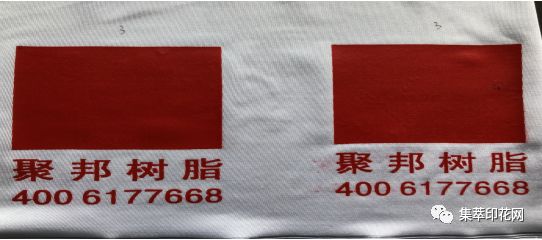With the development of the times, people have gradually realized the importance of environmental protection. Water-based polyurethane resins are valued under these conditions. With the joint efforts of the water-based polyurethane resin industry, water-based polyurethane resins can approach or even surpass solvent-based polyurethane resins in many aspects. In the production process of water-based inks, the combination of various systems has an important impact on performance. Only by using a suitable binder resin and a suitable pigment auxiliary system can the best effect be achieved.

1. Research progress of waterborne polyurethane binder
The water-based polyurethane has a hard phase phase region and a soft phase phase region, and phase separation can occur between the two phases, so it has properties that other resins do not have. Water-based polyurethane not only has some excellent properties of solvent-based polyurethane, such as adhesion, flexibility, low temperature resistance, abrasion resistance, etc .; and because water-based polyurethane resin uses water as a solvent, it has the advantages of environmental protection and non-toxicity. It has broad application prospects.
Overseas research on waterborne polyurethane resins is relatively early, and natural technology will be more mature. The domestic research on water-based polyurethane resin is relatively late. At present, the domestic method is mainly based on solvent method and prepolymer dispersion method. Waterborne polyurethane resins abroad are also mainly used in relatively mature industries such as leather, shoe materials, textile printing and dyeing.
At the same time, foreign researchers have also made mistakes in biodegradation. The use of bio-agricultural products such as linseed oil and soybean oil to modify water-based polyurethane resins can achieve complete biodegradation, while improving performance and reducing costs.
2.Introduction of water-based ink system
As we all know, water-based inks have a great promotion effect on environmental protection. At present, whether it is domestic or imported inks, the standards of solvent-based inks have not yet reached the market. Water-based inks are a complex system, in which the binder as a key component directly determines the performance of water-based inks; but other components in the system also play an important role in performance. Only by selecting appropriate additives to match Maximize the performance of water-based inks to produce high-performance water-based inks.
2.1 Selection of pigments in water-based inks
Pigments in water-based inks play an important role as coloring components. Water-based inks need environmental protection, natural pigments also need to choose environmentally friendly pigments, and need to meet environmental protection standards in various industries. In general, in addition to the environmental protection requirements of pigments, the following requirements must be met: pigments must have strong tinting power, bright colors, etc., need good water resistance, be stable in water-based inks for a long time, and have good compatibility with other components Sex and dispersion.
2.1 Selection of additives in water-based inks
Because in water-based inks, the solvent component is deionized water, and the surface tension of the system is too large, which will cause a series of problems. Generally, various additives need to be added to the system to solve various undesirable phenomena. A large number of bubbles will be generated in the dispersion and grinding process of water-based inks, so a defoamer or even several defoamers are needed to help control the generation of bubbles. At the same time, in order to improve the coloring power in the above process, it is necessary to add a dispersant to help the pigment develop color. In the printing process, due to the effect of surface tension, shrinkage and other phenomena will occur. Therefore, wetting agents and leveling agents need to be added to help eliminate the effects.
3. Application process of water-based polyurethane
3.1 Preparation of water-based ink
The prepared water-based polyurethane resin, water-based auxiliary agent, and quantitative deionized water and the water-based color paste are uniformly stirred by a high-speed disperser, and thickened by adding a thickener to a proper viscosity.
3.2 Printing and drying conditions of water-based ink
Add 3-5% water-based curing agent to the configured water-based ink, pour it on a 120-mesh screen, and print twice on the water-repellent nylon cloth three times at a time; print multiple pieces each, and place them in a 60 ° C oven. Bake for one day and leave to dry at room temperature for 72 hours.
4. Summary
In the future, ink will definitely develop in the direction of water-based. As a technology-based enterprise with independent R & D, production, and sales, Jubang must develop a market-leading water-based polyurethane resin in the process to provide diversified choices for the ink industry.
At the same time, if the ink industry wants to move towards a truly environmentally friendly road, it must improve the production process and formula from the source and absorb advanced domestic and foreign experience.



